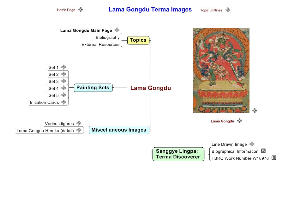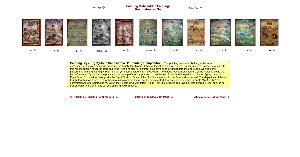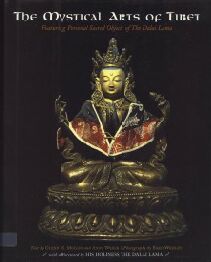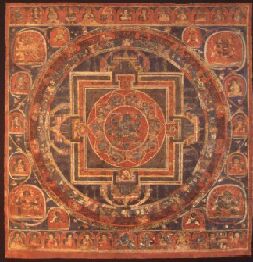 Sakya Field of Accumulation Paintings, or Refuge Field paintings, are not that common to the Sakya Tradition and really only appear to date from the 19th or 20th century. The reason for this is because the Sakyas do not have a standard generic visualization for the Field of Accumulation as is more common to the Nyingma Longchen Nyingtig, Kagyu and Gelugpa Traditions. In the Sakya system of practice a Field of Accumulation is unique, or customized for each and every practice, such as Hevajra, Chakrasamvara, Vajrabhairava, etc., and therefore no generic Field of Accumulation image as a support for visualization was typically required. (See Field of Accumulation Outline Page).
Sakya Field of Accumulation Paintings, or Refuge Field paintings, are not that common to the Sakya Tradition and really only appear to date from the 19th or 20th century. The reason for this is because the Sakyas do not have a standard generic visualization for the Field of Accumulation as is more common to the Nyingma Longchen Nyingtig, Kagyu and Gelugpa Traditions. In the Sakya system of practice a Field of Accumulation is unique, or customized for each and every practice, such as Hevajra, Chakrasamvara, Vajrabhairava, etc., and therefore no generic Field of Accumulation image as a support for visualization was typically required. (See Field of Accumulation Outline Page).
 At the center of the Field of Accumulation is the Primordial Buddha Vajradhara with the Lamdre Lineage (1) directly above and the the Mahakala Lineage (2) descending from the viewer's upper left and the Vajrayogini Lineage (3) descending from the viewer's upper right. Below the central Vajradhara are the Meditational Deities (Tib.: yi dam), Buddhas, Bodhisattvas, Arhats, Protector Deities and Wealth Deities. At the bottom of the composition are the Sixteen Offering Goddesses.
At the center of the Field of Accumulation is the Primordial Buddha Vajradhara with the Lamdre Lineage (1) directly above and the the Mahakala Lineage (2) descending from the viewer's upper left and the Vajrayogini Lineage (3) descending from the viewer's upper right. Below the central Vajradhara are the Meditational Deities (Tib.: yi dam), Buddhas, Bodhisattvas, Arhats, Protector Deities and Wealth Deities. At the bottom of the composition are the Sixteen Offering Goddesses.
Both numbers and colours have been used to try and make the painting more understandable. Each of the coloured blocks will be further cut out from the whole, made into individual pages, and enlarged with each figure in the coloured block numbered and the name listed in accordance with the order in the lineage. This will also accord with the Tibetan name inscription that accompanies each figure in the Sakya Field of Accumulation drawing presented here.
 A new Hevajra Resource Page has been added. Additional new pages have been created and added to the Hevajra section including a Hevajra Masterworks and a Hevajra Forms page. The many miscellaneous Hevajra pages have been brought together under the Resource Page. The main topics of the new page are mediums, mandalas, reading a mandala and forms.
A new Hevajra Resource Page has been added. Additional new pages have been created and added to the Hevajra section including a Hevajra Masterworks and a Hevajra Forms page. The many miscellaneous Hevajra pages have been brought together under the Resource Page. The main topics of the new page are mediums, mandalas, reading a mandala and forms.













